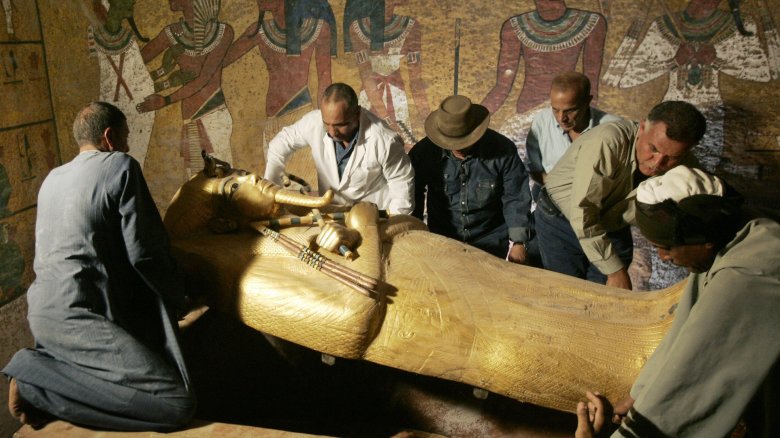Did Ancient Egyptian Tombs Really Contain Booby Traps?
It's an attractive proposition, the idea that the deserts are filled with tombs and lost arks to raid, each protected by a series of fun but challenging puzzles. The thought of outsmarting a millennia-old deadly riddle standing between you and fortune and glory is exciting, harkening back past Indiana Jones to the (super problematic) stories of Alan Quartermain. So what's stopping you from renewing your passport, buying a very big hat, and bullwhipping your way across ancient Cairo's American Ninja Warrior equivalent? Get ready to set sail for disappointment, would-be adventurers.
As with so much of what we see in the movies, the concept of booby trapped tombs is rooted in reality, but substantially less sexy IRL. It turns out that giant spinning blades, hallways full of pendulums, and bottomless pits are pretty much pure fantasy. We can probably thank sensationalist stories from the early 20th century for a lot of these misconceptions, like the early reports on the excavation of Tutanhkamun's tomb and the supposed curse surrounding the people who discovered it. Famously, the ill-fated archeologists were less "supernaturally cursed" and more "exposed to disease and the elements at a time when medicine and emergency services weren't exactly at their best." Still, stories about ancient magic and deathly wards protecting Egypt's dead kings persisted, thanks in large part to famous names lending them credence, including, weirdly, Sir Arthur Conan Doyle, author of the Sherlock Holmes stories.
In the less glamorous light of the real world, the closest thing anyone has found to a functioning booby trap in an Egyptian tomb was a room discovered in 2000 by Zahi Hawass. The Los Angeles Times reported on his find: an area coated in a two foot thick layer of yellow powder that "sickened his team." While it was speculated that this might have been an intentional addition by the crypt's designers to keep out intruders, if that's what it was, it was less than effective, and definitely fell short of the giant-rolling-boulder standard set by Hollywood.
